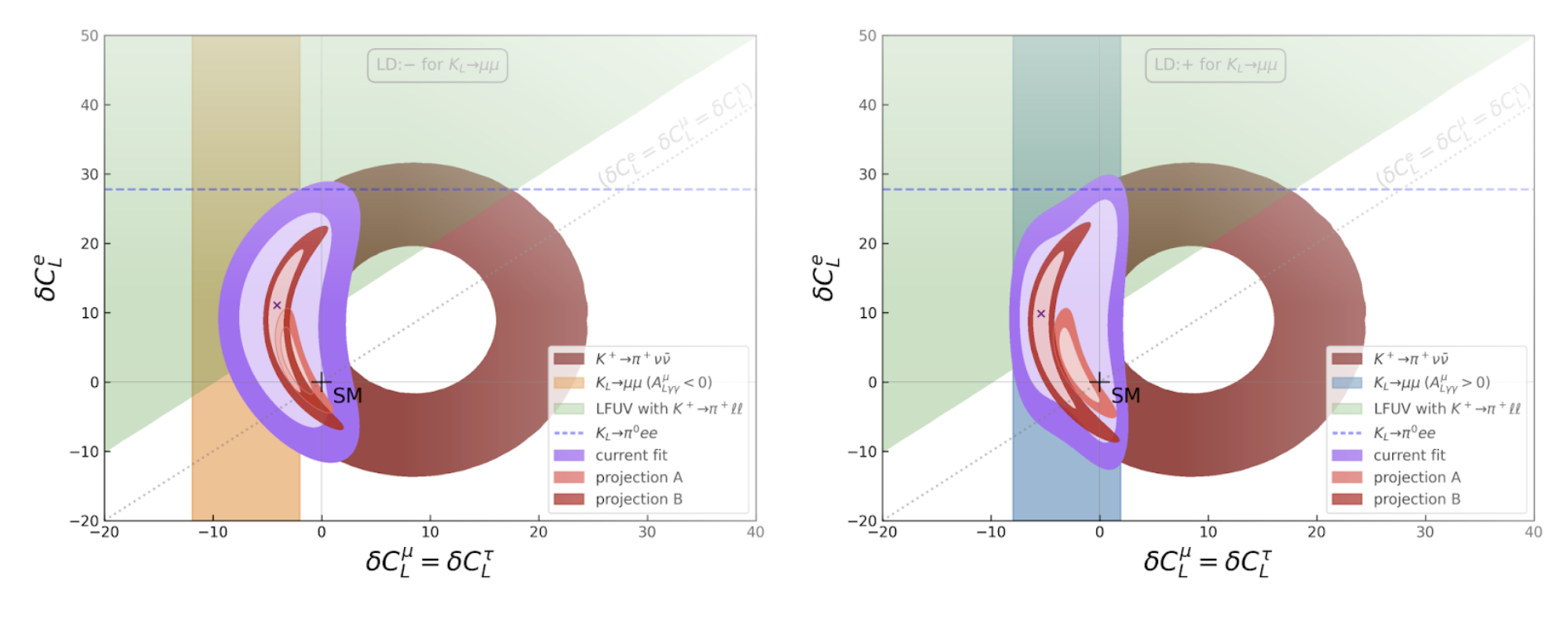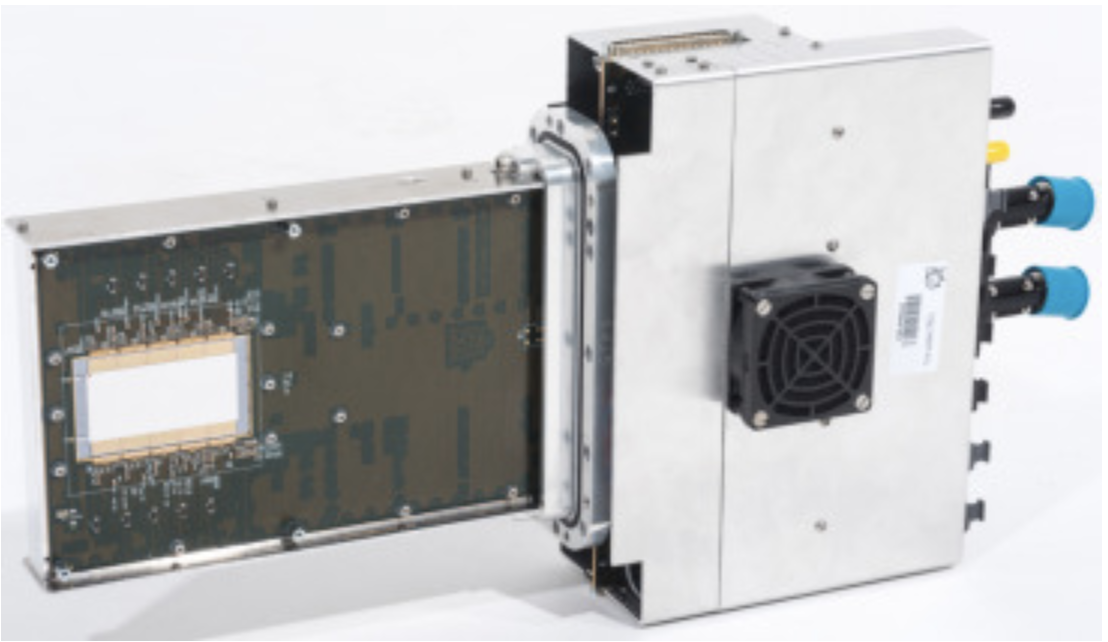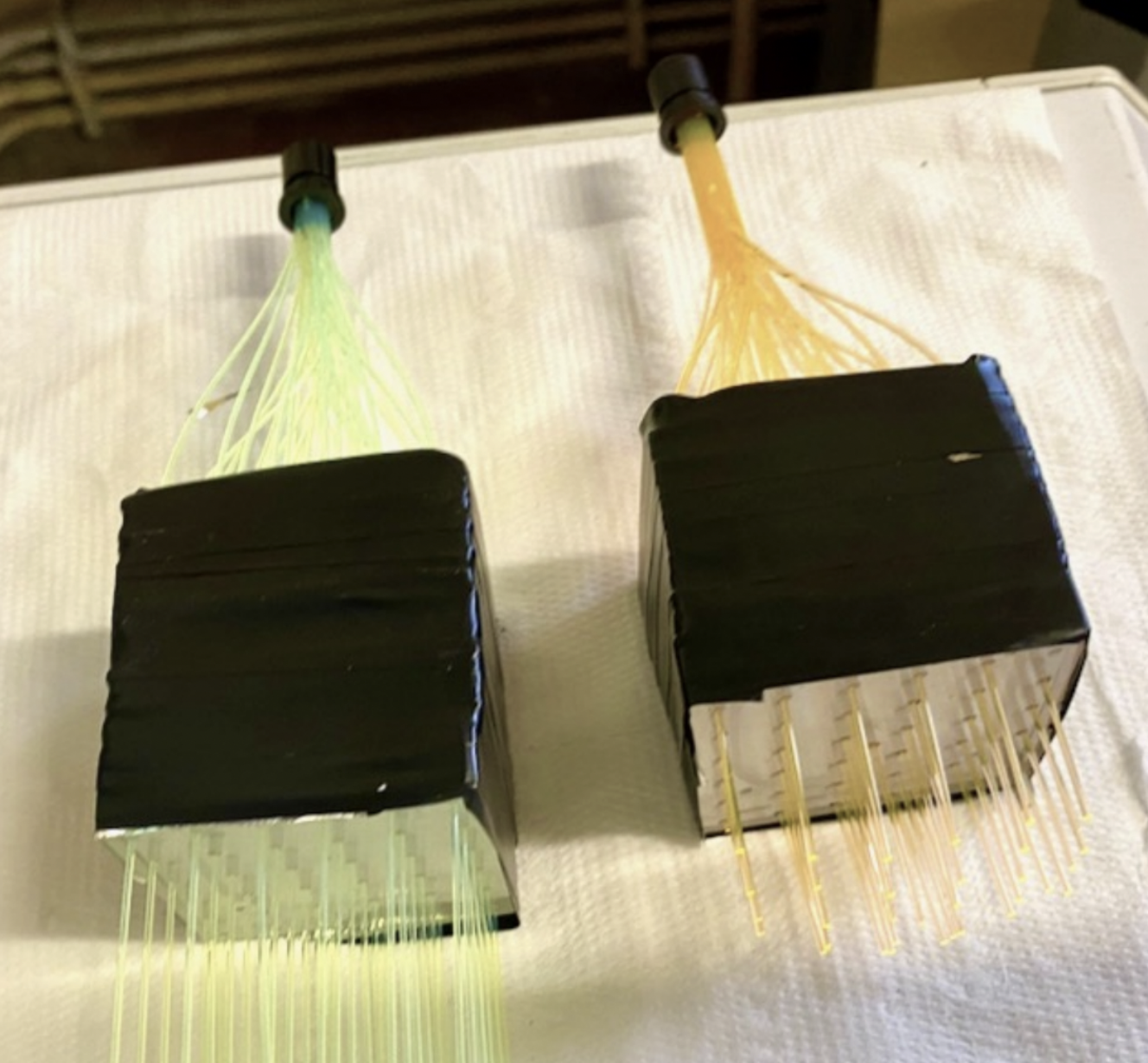HIKE collaboration targets a new era of kaon experiments

The recently proposed High Intensity Kaon Experiments (HIKE) project offers a long-term vision for a research programme at CERN, covering experimental searches in the kaon sector that could enable a new generation of searches and indirectly probe new physics beyond the Standard Model.
HIKE is intended to continue the very successful tradition of kaon experiments at CERN in ECN3, the latest of which is the NA62 experiment. This is in line with the recent update of the European Strategy for Particle Physics that identified the continuation of high-intensity kaon experiments, including their future upgrades, as one of the key priorities for Europe.
As Matthew Moulson explains: “HIKE offers an ambitious programme beyond a mere continuation of NA62. It would profit from a beam intensity increase by a factor between four and six with respect to NA62, and cutting-edge detector technologies” and adds “To meet the experimental conditions we will need to rebuild most of the NA62 detectors or their readouts, to cope with the higher intensities of the beam and offer better timing performance”.
The HIKE project will further expand the physics reach of NA62, by studying with higher precision the physics of K+ decays. “One of our primary benchmarks is to measure the branching ratio for the K+ → π+νν¯ down to a precision of 5% thus matching the theoretical uncertainty of the Standard Model. This is a significant improvement compared to the foreseen precision of 10% that NA62 is projected to reach by the end of LS3. This measurement would nominally require about 500 signal events assuming a certain background”, says Cristina Lazzeroni. Phase 1 of the HIKE project would also look for lepton universality/number/flavour violation through a number of key observables like the ratio of K+ → e+ν compared to K+ → μ+ν and searches for decays such as K+ → π−l+l+ and K+ → π+µe. HIKE also plans two phases with the use of neutral Kaon beams. Phase 2 will focus on 𝐾𝐿 decays including decays with charged particles in the final stage while Phase 3, also known as KLEVER, focuses on measuring the branching ratio of the 𝐾𝐿 → 𝜋0𝜈𝜈¯ decay with a 20% relative precision. Cristina Lazzeroni explains “The different phases require detectors with a better timing resolution by a factor of 4 as well as increasing the radiation hardness of the electronics. The essential point of HIKE is that any detector inserted is intended to be used in future phases of the experiment and thus should be designed taking this into account. Overall, our plan is to adopt an integrated approach in which detectors are rearranged but reused”. In that sense, HIKE is a new facility that would allow experiments using the multiplicity of high-intensity kaon beams available at CERN.

Table 1: Compendium of new-physics models relevant for kaon processes. Table from J. Aebischer, A. J. Buras, and J. Kumar. “On the Importance of Rare Kaon Decays: A Snowmass 2021 White Paper”. In: 2022 Snowmass Summer Study. Mar. 2022. arXiv: 2203.09524 [hep-ph]. For the full list of reference read the HIKE LoI, HERE.

Figure 1: Relation between kaon rare decay modes and the parameters 𝜌 and 𝜂 of the unitary triangle (UT). The direct link between decay modes and the UT indicates short distance terms dependent on 𝜌 or 𝜂 contributing to the corresponding decay amplitudes. Decays not directly connected to the UT are relevant to interpret the experimental results of the decay modes to which they are related.
HIKE will also make a wide-ranging investigation of the kaon sector. For example,in the Kaon sector, lepton universality can be tested in different ways. Searching for lepton-flavour violation processes in the Kaon sector could provide evidence that would allow distinguishing between different models proposed to address the possible lepton violation.
Currently a plethora of models, developed to explain this asymmetry, require the existence of lepto-quarks. “The idea is that a model explaining the results in the beauty sector could also allow for predictions in the Kaon sector. Furthermore there are ways to examine the data in a model-independent way” says Karim Massri.
One particular example in this regard is the analysis of decays like K+ → π+ l+ l- where leptons can be electrons or muons in analogy to the decay ratios studied at the B sector. “We can look at the ratio of these branching ratios or look at variables that may be more sensitive to one part of the spectrum of the momentum transfer in the decay. The idea is that decays like K+ → π+ l+ l- can be described by a form factor. This describes the modifications that you expect with respect to the kinematics of the decay, due to the structure of K+ and π+. The parameters entering in the function of the form factor would also provide a sensitive test for lepton flavour universality. In principle, these parameters should be equal for decays of Kaons to electrons and to muons; therefore finding a small deviation could point to a violation of the lepton flavour universality”, explains Massri.

Figure 2: Global fit to current data (purple, labelled as “current fit” in the legend) and the results of two projections discussed in Ref. [85]: A, light-red, where central values of observables currently only constrained with upper bounds are set to the SM predictions; B, dark-red, where central values for all of the observables are best-fit projections from existing data. The SM and best-fit point with the current data are indicated with black and purple crosses, respectively. The two figures represent the two possible signs of the long-distance contribution to the 𝐾𝐿 → 𝜇 +𝜇 − process; the sign ambiguity may be resolved with future data.
Another example, touching upon a previous measurement of NA62, concerns the measurement of the branching ratio of the K → e ν decay to K → μν decay. The decay to an electron is suppressed in the Standard Model and could be quite sensitive to small contributions from interactions that violate the lepton-flavour universality. “We can use this ratio as a very sensitive probe for lepton flavour universality violation. The theoretical calculation is extremely accurate and is based on radiative corrections. Therefore this can be an extremely sensitive channel and a good place for small contributions from new physics to show up. NA62 measured this with a 0.4% precision and in HIKE this could be pinned down to the region of per mille, becoming one of the most sensitive tests of lepton flavour universality” concludes Massri.
Developing the required detector technologies for HIKE could profit from synergies with the ongoing R&D for the upgrade of the LHC experiments. Perhaps, one of the most challenging measurements for the HIKE programme is the fact that incoming beam particles must be tracked at a rate of 3 GHz. Presently NA62 achieves a rate of 750 MHz with its GigaTracker system consisting of four silicon pixel stations. The time resolution of the detectors must be improved across the board by a factor of four in order to maintain the loss of events from accidental coincidence to acceptable levels (25%) while meeting other key performance specifications such as space-time reconstruction performance, low material budget, high single photon efficiencies. “The new system should handle four times more intensity thus calling for a new design to tackle the radiation from the charged particles as well as achieve a timing resolution of better than 50 picosecond” says Giuseppe Ruggiero and adds “one of the most promising technological options is the use of hybrid 3D-trenched pixel technology, called timeSPOT, that was originally developed for the LHC experiment. The new GigaTracker for HIKE could offer an important use case for this technology and is currently being explored by our colleagues”.

Figure 3: The NA62 Gigatracker (GTK) will have to be upgraded to handle four times the current rate.
A second key challenge for HIKE is the development of straw trackers that would increase the experiment’s rate capability for secondary particles. “Presently there are four stations of straw trackers in NA62. Moving to higher intensities means that we would need much more straws for decreasing the drift time and the occupancy of particles in each straw. This means decreasing their diameter from 10mm down to 5mm as well as decreasing the wall thickness from 36 μm to 20 μm to decrease the material budget” says Ruggiero. Operating such thin straws in vacuum conditions represents a certain technological challenge calling for careful design and significant R&D efforts.

Figure 4: Pre-production of straws with a diameter of 4.82 mm and a wall thickness of 19 𝜇m.
To meet the ambitious goals of the entire HIKE programme, calorimetry plays an important role providing sufficient detection efficiency and time resolution. Moulson explains “Right now the NA62 experiment uses the NA48 liquid-krypton calorimeter which has been around since the mid 1990s. This beautiful instrument has served particle physics for more than 25 years offering an excellent resolution at the order of 3%/ √ E”. However, the time resolution will be insufficient for the HIKE high-intensity program and would require improvement by at least a factor of four. To meet this goal two different directions are currently explored. “One way is to upgrade the calorimeter readouts for HIKE’s phase 1. This includes faster signal shaping and digitizers for the readout system”. However for the next phases of HIKE, the diameter of the inner bore of the calorimeter limits the solid angle of the used beam, thus a new calorimeter will be needed. “For this new calorimeter, the leading technology that we currently explore is the fine-sampling shashlyk design proposed for the calorimeters of the KOPIO and PANDA experiments in Brookhaven and Fair respectively. Using very fine sampling you can get energy resolution of a few percent stochastic and time resolution of significantly less than 100 ps at 1 GeV. This would be an ideal technology for us and relatively easy and economical to construct” concludes Moulson.
Further technological upgrades that could increase HIKE’s performance are also explored. “Another thing we are currently looking into is the use of alternatives to conventional plastic scintillators. This idea gave the inspiration for the NANOcal project” adds Moulson (read a previous article HERE). In the meantime, there are possible technological upgrades that could increase the performance. One of the things HIKE is looking at is the use of alternatives to conventional plastic scintillators. This was the inspiration for the NANOCal project. “The project derives lessons from the long-lasting research on nanocomposite scintillators that use semiconducting quantum dots as the elements that are actually scintillating. These semiconducting crystals with a size of the order of 10 nm can be dispersed in a glass or plastic matrix providing very fast timing and radiation robustness. The latter is an intrinsic property of quantum dots but in addition we are using unconventional materials for the matrix (i.e. more radiation robust plastic or some form of silicone)”. This is a research area actively pursued under the NanoCal project, funded by the H2020 AIDAInnova. The outcome of this research could be adapted for HIKE while also finding other applications.

Figure 5: Small shashlyk prototypes tested in fall 2022. The left one (green) was constructed using a conventional scintillator while the one on the right (yellow) was the first attempt to use a nanocomposite scintillator in a real instrument.
Last but not least, for the third phase of HIKE, also known as KLEVER, which aims to measure the branching ratio of the decay KL → π0νν¯ to 20%, it is important to get extremely good hermicity that would allow vetoing photons from other background processes. “We expect a substantial background from decays like KL → π0π0 , which has a branching ratio eight orders of magnitude higher compared to the SM prediction for KL → π0νν¯. To reject photons from background processes we need a detector installed inside the neutral beam that will be transparent to neutrons but have a good efficiency when hit by photons. This gave birth to the idea of the small-angle calorimeter (SAC), which will sit in the neutral beam at the downstream end of the experiment offering fine segmentation both in the transverse and the longitudinal dimension”. The SAC must have good photon detection efficiency, especially for high energy photons while being as insensitive as possible to the accidental coincidence of nearly 600 MHz of neutral hadrons in the beam. “Our idea was to use dense high-Z crystals based on a Cerenkov radiator like lead fluoride (PbF2) or an ultra-fast scintillator such as the third generation of lead tungstate (PWO-UF). It is important to construct the detector in a way that will make it intrinsically not sensitive to neutrons. These R&D lines also profit from synergies within the framework of AIDAInnova and profits from previous projects that have studied these properties on crystals at the SPS like the AXIAL and STORM experiments. We also share resources, share beam time and the idea is to try and create a small calorimeter using this principle of aligned crystals for increasing the efficiency of photons while maintaining the instrument compact that is not very sensitive to neutrons.”
In summary, HIKE would take full advantage of the ECN3 experimental hall to provide a comprehensive study of flavour physics in the kaon sector. A number of ongoing collaborative projects on detector R&D would allow HIKE to realise its full physics potential complementing that of collider searches. The successful outcome of the ongoing R&D would allow HIKE to evolve and adapt its physics scope, an important feature for a project that embraces a time scale of more than decade, during which the physics landscape could change.
